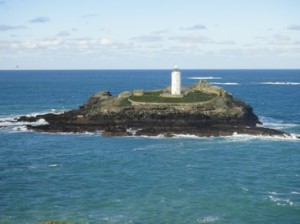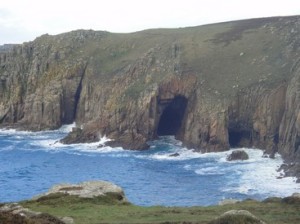The last of my three day trip to North Cornwall. I have a small gap to complete, which although only 9 miles has quite an interesting section. I shall be walking through perhaps the best preserved area of Cornish tin mining surviving today.
I drive early to Cape Cornwall and park in the National Trust car park, like the other occasions I have used this car park there is no one there at the hut. There again being an NT Member I get free parking anyway. I walk into St Just and get the early morning bus bound for St. Ives. I get off at Treen, just by the Gurnards Head pub, where I finished yesterdays walk.

I walk through Treen again and follow the footpath directly towards Gurnards Head and the coast. The walking is very easy and I make excellent time. As I walk over Chypraze Cliff I am able to see Pendeen Lighthouse. As a lighthouse Pendeen is relatively new, being built in 1900, but becoming automated in 1995. I pass by the lighthouse and walk down a small lane.




I can now see much evidence of mine workings, with numerous chimneys and building on the horizon. I am now entering the area containing the Geevor, Botallack and Levant mines. This whole area can be accessed by the SWCP and is a fantastic and interesting site. Although all closed down today, the Geevor mine operates as a tourist site offering mine tours and telling the story of the Cornish Tin Mining in the area. There are a number of information boards, scattered about. But you would probably need a guided tour to understand the whole process of tin mining and the functions of the many derelict buildings over the huge site. I espy the Crowns, a set of engine houses perched precariously on cliffs above the sea and probably the most photographed of all Cornish Tin Mines. I pass by the Levant Mine famous for its tunnels stretching out deep beneath the sea, where miners dug for copper and tin. This industrial area continues to Kenidjack Valley, where the path descends and follows a water course for a short distance before rising again out of the valley. Most the industrial buildings appear to be covered by vegetation, which hides many water stamps buildings to crush the ore mined nearby.

Although, I am now away from the main mine area, there are still numerous tin and copper mines close by. I descend to Cape Cornwall once thought to be the most southerly point of the UK, but that honour has since been passed to Lands End.

Distance today = 9 miles
Total distance = 657 miles























